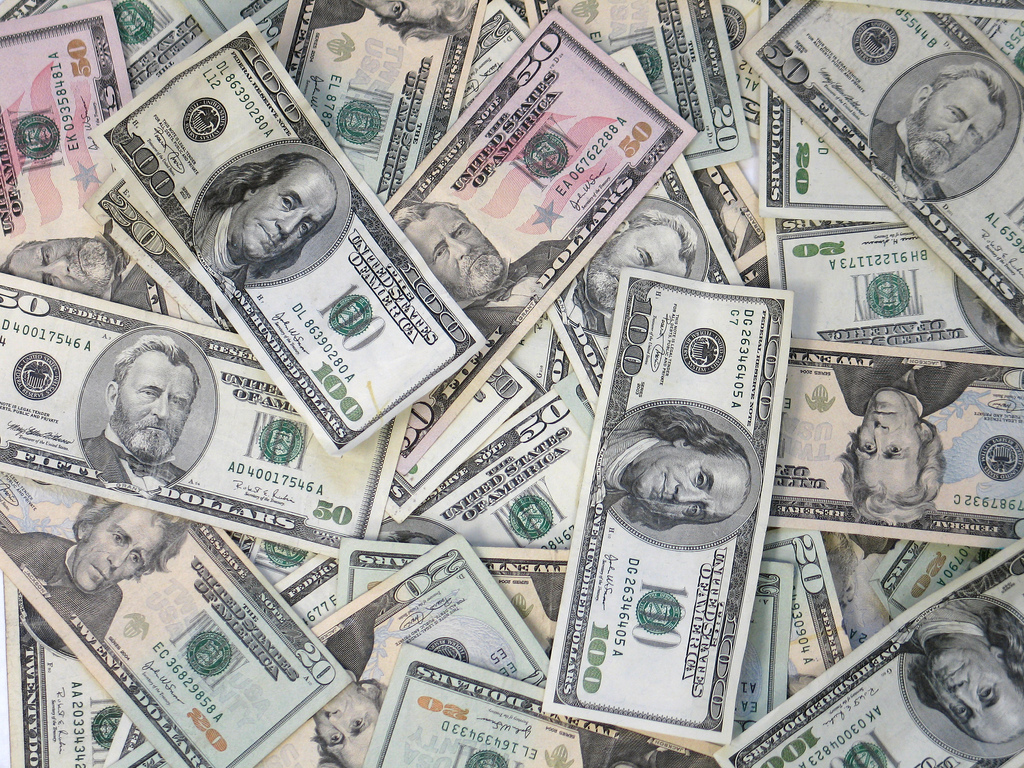7 Things We Learned About Federal Student Loans & The Companies That Profit From Them

(Tracy O)
Fifty years ago, Congress created the federal loan program as a way to help Americans realize their dreams of a better life through higher education. While millions of students have no doubt benefited from the program, millions of others have found themselves burdened by mountains of debts, fielding calls from debt collectors and loan servicers, and watching as their paychecks are whittled down by garnishments. Today, seven million former college students are in default with a record $115 billion in federal loans. While those figures may be oppressing borrowers, it’s providing a stream of income – and profit – for companies contracted by the government to collect payments from debtors.
A new report from Bloomberg highlights just how profitable the federal student loan industry can be for debt collectors, refinancers and for-profit colleges.
While the report is full of surprising numbers and consumer stories of the gigantic industry, it also provides insight into a system some say is failing students, despite its original intention of making life better for them.
Student loans, both private and federal, combine to create a trillion-dollar business — that’s 12 zeros — and that money is going somewhere, often to companies that use illegal, hurtful tactics to collect their share of the bill.
Here are seven things we learned from Bloomberg’s report on who’s profiting from $1.2 trillion of federal student loans:
1. The federal student loan program is big business: the government has distributed about $100 billion in education loans each year since 2009.
And the tab is only expected to increase – nearly doubling to $200 billion issued annually in the next decade.
2. It’s not just students who benefit from the federal loan program. Companies that make money off the loans run the gamut from debt servicers like Affiliated Computer Services Inc. – part of Xerox Corp., which is currently under federal investigation for inaccuracies and overcharges – to for-profit colleges like Education Management Corporation, which just agreed to pay $95.5 million to settle fraud and recruitment violations, and Apollo Education Group – the operator of the embattled University of Phoenix.
3. Not all loans are issued by the government, but they all have ties to the feds. Private lenders also issue billions of dollars in loans each year, most backed by the government.
During the recession, the federal government purchased $112 billion in existing debt. Bloomberg reports that Sallie Mae recorded a gross revenue over two years of more than $600 million from selling debt.
4. Student loan borrowers generally aren’t aware of what’s going on behind the scenes with their loan originator. Instead, their point of contact is typically a loan servicer, which processes monthly payments.
These companies are contracted by the federal government to collect payments from borrowers in default, and these agreements can be lucrative.
According to Bloomberg, Education Department awarded servicing companies $576 million in fees in the most recent fiscal year.
Under the contracts, firms typically earn monthly fees by loan status: $2.85 for those in repayment, $1.05 when borrowers are in school and $0.45 when they’re delinquent 361 days or more, data from the Federal Procurement Data System shows.
5. Some of these servicing companies are under investigation by federal regulators for illegal collection practices.
Navient Corp, which spun off from Sallie Mae in 2014, announced in August that it could face a lawsuit from the Consumer Financial Protection Bureau over allegedly unfair practices like overcharging and imposing excessive fees on consumers’ loans.
A spokesperson for the Dept. of Education tells Bloomberg that the agency will review performance standards for loan servicers before rebidding contracts next year.
6. Servicers aren’t the only companies that receive an influx of cash from the feds when it comes to student loans. Debt collection firms are also contracted by the Dept. of Education to the tune of hundreds of millions of dollars.
FMS Investment Corp., a collection company, was paid $227 million by the Dept. of Education from October 2011 to Sept. 2015. But that company is just a small cog in a bigger machine.
It’s a unit of Ceannate Corp., one of two dozen collection firms that were paid $936 million in the last fiscal year by the Dept. of Education.
Those figures are only expected to grow, Bloomberg reports, as the Dept. of Education is bidding a new contract, its largest ever.
Despite the mounting contract costs, using collection agencies – even to the detriment of borrowers – has created results for the government.
According to the Government Accountability Office, collection companies helped recover about $9 billion on more than 1.5 million loans from 2011 to 2013.
7. When attempts by servers and collection agencies fail, the government doesn’t simply give up on its owed debt. Instead, the Treasury Department turns to garnishments of Social Security, tax refunds or wages, Bloomberg reports.
Treasury said it had net offsets of $2.27 billion for education debts in fiscal 2015.
While the way in which the federal student loan program operates likely won’t change overnight, advocates say it’s something that prospective borrowers should keep in mind when looking at their college financing options.
“This is not some small cottage industry,” Rohit Chopra, the former student-loan ombudsman for the U.S. Consumer Financial Protection Bureau, which oversees loan servicers, debt collectors and private student lenders, tells Bloomberg. “There is a large student-loan industrial complex. Rising costs of college and flat family incomes have created enormous business opportunity for every step of the loan process.”
Who’s Profiting From $1.2 Trillion of Federal Student Loans? [Bloomberg]
Want more consumer news? Visit our parent organization, Consumer Reports, for the latest on scams, recalls, and other consumer issues.

